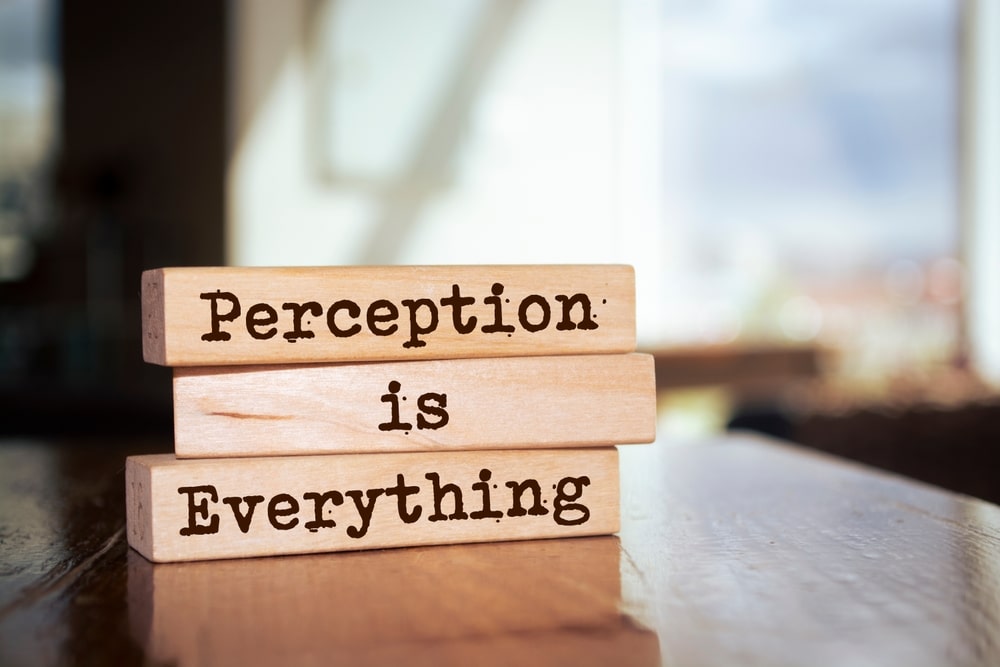When interacting with clients and customers, perception is reality! By using principles from behavioral psychology, leaders can emphasize the positive to improve customer satisfaction.
Customer satisfaction can be greatly improved with behavioral psychology by segmenting experience, giving customers a sense of control, or even becoming part of their routines, in order to highlight the positive.
Perception is reality
In every customer encounter, perception is reality. In fact, perception can be even more important than reality. We sometimes ignore reality, but we rarely ignore our perceptions. Whether your organization sells goods or provides professional services, the customer’s perceptions of your product or service matter. A lot. With a master’s degree in both psychology and in organizational development, I’d like to shed some light on the behavioral psychology aspect of customer perceptions.
In leadership coaching, I know many leaders invest time and effort to improve the quality, timeliness, and relevance of their offerings. But unless you focus on how customers perceive their experiences, your offerings may not generate the hoped for customer satisfaction. Of course, organizations should always pay attention to the quality of their products and services. But to drive better customer impressions and higher customer satisfaction, leaders need to consider how the customer journey appears from the customer’s point of view, applying principles of behavioral psychology to achieve the best results.
This article will focus on using behavioral psychology to improve customer journeys and experiences. Paying attention to the high and low points, or “pain points” of a customer’s journey, and how those experiences unfold in time, are keys to improving both perception and reality.
Pay attention to the sequence of events
People don’t remember all portions of an experience equally. Research in behavioral psychology shows that they tend to remember a few high and low points and gloss over the rest. The result is that just a fraction of the complete customer experience can have an outsized impact on perception.
People are also sensitive to trends – whether an experience is moving from negative to positive, or the reverse. Not surprisingly, people prefer that their experiences improve over time – and the ending is most important of all. Even if an experience has been positive until the last interaction, a bad ending tends to overwhelm the customer’s memory.
Knowing these quirks of behavioral psychology can help organizations maximize positive customer impressions. Avoiding a “last bad experience” is one reason some hotels have eliminated the need to check out. It’s also why cruise ships schedule the “captain’s dinner” at the end of the trip. Leaders should look at the customer journeys their organizations offer. How can they emphasize positive experiences? How can “pain points” be minimized or managed?
Segmenting experiences to emphasize the positive
Another useful tool from the behavioral psychology toolkit is managing the sequence of experiences to minimize the impact of negative experiences while highlighting positive ones. We’ve already seen that customers are sensitive to trends, such as whether the experience is improving or getting worse. When the customer journey involves several different interactions, it’s useful to get the “bad stuff” out of the way at the beginning and to spread the “good stuff.”
If you’re a hotel or cruise line, that can mean getting all the payment and personal information in a single transaction. Now the service provider is free to sprinkle perks and freebies into the rest of the journey. Memory of the “pain point” will fade in comparison to the perks and freebies.
If you offer professional services instead of hotel stays or cruises, think how segmenting might work for you.
For example, you probably need to gather background information about the client and the project – that’s a “pain point” and will count against the customer‘s experience unless managed. Try to gather all the information needed at one time and minimize having to ask follow up questions. The “perks” in this case will be rolling out with deliverables smoothly and predictably.
Giving customers control
A third way to improve customer satisfaction is to give customers control over their experience. People want to feel that they have agency, or the ability to change events and outcomes in their lives. There are many ways to make customers feel empowered, engaged, and informed.
For instance, offering a choice of service packages, B2B or B2C like airplane seats, or hotel rooms is a good way to start. Customers who have these feelings are less likely to blame the service provider when things go wrong.
Proactively updating clients also gives them a sense of control. Providing ways to engage with the organization and offering timely updates are good ways to boost engagement and information.
Another way to promote feelings of control is to avoid making changes that could frustrate your customers. If you have to change what customers or clients originally bought, you must apologize and explain.
Consistency in your offerings such as brand promises, messaging, even “look and feel” reassures customers of a predictable experience and a sense of control. People become comfortable with routines and if your organization is lucky enough to become part of someone’s routine, that’s a bonus! Take advantage of it!
Behavioral psychology can help organizations enhance the customer journey to maximize customer satisfaction. Strategic use of sequencing and segmenting will help accentuate the positive and ensure customers leave with a positive impression of their experience. And don’t underestimate the power of giving customers control or agency. Helping customers feel empowered, engaged, and informed is a pathway to success.
===================================
Rachel Burr is an executive and leadership coach with over 20 years of experience working with CEOs and the C-suite across all industries, in organizations of from 200 to 10,000 employees. Rachel holds dual master’s degrees in Organization Development and Clinical Psychology, and numerous certifications in the field of executive coaching. Rachel is a “people expert” who works with clients to unleash their leadership potential. If you would like to learn more, please contact us.

